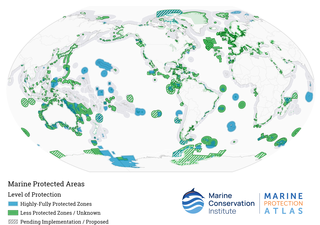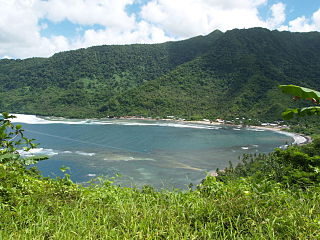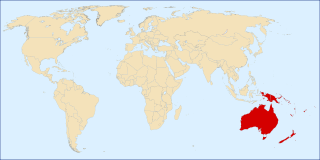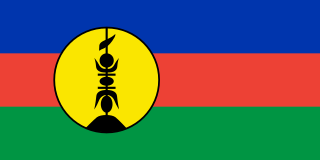Related Research Articles

New Caledonia is a sui generis collectivity of overseas France in the southwest Pacific Ocean, south of Vanuatu, about 1,210 km (750 mi) east of Australia, and 17,000 km (11,000 mi) from Metropolitan France. The archipelago, part of the Melanesia subregion, includes the main island of Grande Terre, the Loyalty Islands, the Chesterfield Islands, the Belep archipelago, the Isle of Pines, and a few remote islets. The Chesterfield Islands are in the Coral Sea. French people, especially locals, call Grande Terre "Le Caillou".

Pacific Islanders, Pasifika, Pasefika, Pacificans or rarely Pacificers are the peoples of the Pacific Islands. As an ethnic/racial term, it is used to describe the original peoples—inhabitants and diasporas—of any of the three major subregions of Oceania.

The Pacific Community (PC), formerly the South Pacific Commission (SPC), is an international development organisation governed by 27 members, including 22 Pacific island countries and territories around the Pacific Ocean. The organisation's headquarters are in Nouméa, New Caledonia, and it has regional offices in Suva, Pohnpei, and Port Vila, as well as field staff in other locations in the Pacific. Its working languages are English and French. It primarily provides technical and scientific advice, and acts as a conduit for funding of development projects from donor nations. Unlike the slightly smaller Pacific Islands Forum, the SPC is not a trade bloc, and does not deal with military or security issues.

Marine protected areas (MPA) are protected areas of seas, oceans, estuaries or in the US, the Great Lakes. These marine areas can come in many forms ranging from wildlife refuges to research facilities. MPAs restrict human activity for a conservation purpose, typically to protect natural or cultural resources. Such marine resources are protected by local, state, territorial, native, regional, national, or international authorities and differ substantially among and between nations. This variation includes different limitations on development, fishing practices, fishing seasons and catch limits, moorings and bans on removing or disrupting marine life. In some situations, MPAs also provide revenue for countries, potentially equal to the income that they would have if they were to grant companies permissions to fish. The value of MPA to mobile species is unknown.

Marine conservation, also known as ocean conservation, is the protection and preservation of ecosystems in oceans and seas through planned management in order to prevent the over-exploitation of these marine resources. Marine conservation is informed by the study of marine plants and animal resources and ecosystem functions and is driven by response to the manifested negative effects seen in the environment such as species loss, habitat degradation and changes in ecosystem functions and focuses on limiting human-caused damage to marine ecosystems, restoring damaged marine ecosystems, and preserving vulnerable species and ecosystems of the marine life. Marine conservation is a relatively new discipline which has developed as a response to biological issues such as extinction and marine habitats change.

The Secretariat of the Pacific Regional Environment Programme (SPREP) is an intergovernmental organisation based in Apia, Samoa with more than 90 staff members. The organisation is held accountable by the governments and administrations of the Pacific region to ensure the protection and sustainable development of the region's natural resources. The organisation actively promotes the understanding of the connection between Pacific island people and their natural environment and the impact that these have on their sustenance and livelihoods. The organisation was established in 1982. Previously South Pacific Regional Environment Programme, the word "South" was replaced with "Secretariat" in 2004, in recognition of the members north of the equator. The French equivalent name is Programme régional océanien de l’environnement (PROE).

Uafato is a village on the north east coast of Upolu island in Samoa within the political district of Va'a-o-Fonoti. It has a population of 254. The village is part of a conservation zone called the Uafato Conservation Area with national and global significance as a unique cultural and conservation area.

The Solomon Archipelago is a terrestrial ecoregion and marine ecoregion in the Pacific Ocean. It includes the tropical ocean waters surrounding most of the Solomon Islands archipelago, and includes Bougainville Island and Buka Island of Papua New Guinea and their surrounding waters.

Green Fins is an approach to sustainable marine tourism activities operating in Southeast Asia, Caribbean and the Indian Ocean that works with business operators, communities and governments. It helps to implement environmental standards for the diving and snorkelling industry through a code of conduct. The overall aim of the initiative is to mitigate damaging impacts to the marine environment from the marine tourism sector and improve sustainability. The code of conduct is a set of 15 points designed to tackle the most common and detrimental effects of SCUBA diving and snorkelling activities on the habitat in which they operate.

The following outline is provided as an overview and topical guide to Oceania.
The Funafuti Conservation Area is a marine conservation area covering 33 square kilometers of reef, lagoon and motu (islets) on the western side of Funafuti atoll in Tuvalu. The marine environment of the conservation area includes reef, lagoon, channel and ocean; and are home to many species of fish, corals, algae and invertebrates. The islets are nesting sites for the green sea turtle and Fualopa hosts a breeding colony of black noddy.

Brianna Fruean is an activist and environmental advocate for Samoa; she is a second year student at the University of Auckland.

The Memorandum of Understanding (MoU) for the Conservation of Cetaceans and their Habitats in the Pacific Island Region is a Multilateral Environmental Memorandum of Understanding concluded under the auspices of the Convention on Migratory Species of Wild Animals (CMS), also known as the Bonn Convention, and in collaboration with the Pacific Regional Environment Programme (SPREP). The MoU provides an international framework for coordinated conservation efforts to improve the conservation status of the Pacific Islands Cetaceans and came into effect on 15 September 2006.

The Western Pacific Regional Fishery Management Council (WPRFMC) is one of eight regional councils established under the Magnuson-Stevens Fishery Conservation and Management Act (MSA) in 1976 to manage offshore fisheries. The WPRFMC's jurisdiction includes the US exclusive economic zone (EEZ) waters around the State of Hawaii; US Territories of American Samoa and Guam; the Commonwealth of the Northern Mariana Islands (CNMI); and the US Pacific remote island areas of Johnston, Midway, Palmyra and Wake Atolls; Baker, Howland and Jarvis Islands; and Kingman Reef. This area of nearly 1.5 million square miles is the size of the continental United States and constitutes about half of the entire US EEZ. It spans both sides of the equator and both sides of the dateline. The WPRFMC also manages domestic fisheries based in the US Pacific Islands that operate on the high seas.

The Kanaks are the indigenous Melanesian inhabitants of New Caledonia, an overseas collectivity of France in the southwest Pacific. According to the 2019 census, the Kanaks make up 41.2% of New Caledonia's total population — corresponding to around 112,000 people.

Oceanian culture encompasses the collective and diverse customs and traditions of art, architecture, music, literature, lifestyle, philosophy, politics and religion that have been practiced and maintained by the many ethnic groups of the geographical region of Oceania since prehistory. Cultures of Oceania reflect not only that of the region's indigenous peoples, but also the cultures brought by European colonisation and the United States, particularly through mass culture such as cinema and TV. Oceania is commonly divided into four geographic sub-regions, characterized by shared cultural, religious, linguistic, and ethnic traits: Australasia, Melanesia, Micronesia, and Polynesia. Most Oceanian countries are multi-party representative parliamentary democracies, and tourism is a large source of income for the Pacific Islands nations.

The coral reefs of Tuvalu consist of three reef islands and six atolls, containing approximately 710 km2 (270 sq mi) of reef platforms. The islands of the Tuvalu archipelago are spread out between the latitude of 5° to 10° south and longitude of 176° to 180°, west of the International Date Line. The islands of Tuvalu are volcanic in origin. On the atolls, an annular reef rim surrounds the lagoon, and may include natural reef channels. The reef islands have a different structure to the atolls, and are described as reef platforms as they are smaller tabular reef platforms that do not have a salt-water lagoon, although they may have a completely closed rim of dry land, with the remnants of a lagoon that has no direct connection to the open sea or that may be drying up.

Gaualofa is a reconstruction of a va'a-tele, a double-hulled Polynesian voyaging canoe. It was built in 2009 by the Okeanos Foundation for the Sea. It was given to the Samoa Voyaging Society in 2012, on the occasion of Samoa's 50th anniversary of independence. It is used to teach polynesian navigation.
References
- 1 2 "Support to the organization of the CRISP Round Table in Suva". French Embassy. Retrieved 4 June 2011.
- ↑ South Pacific Regional Environment Programme (2005). SPREP annual report. The Programme. Retrieved 4 June 2011.
- ↑ "Visas for France and the French Pacific Territories". New Zealand Consulate-General Noumea, New Caledonia. Retrieved 4 June 2011.
- ↑ United Nations Environment Programme (June 2007). Unep Annual Report 2006. UNEP/Earthprint. pp. 61–. ISBN 978-92-807-2801-9 . Retrieved 4 June 2011.
- ↑ Société des Océanistes; Musée de l'homme (Muséum national d'histoire naturelle) (2007). Journal de la Société des Océanistes (in French). Musée de l'homme. p. 77. Retrieved 4 June 2011.
- 1 2 "Intern Opportunity - ReefBase Pacific Project Assistant". sprep.org. Secretariat of the Pacific Regional Environment Programme (SPREP). Archived from the original on 20 July 2011. Retrieved 4 June 2011.
- 1 2 O'Garra, Tanya (June 2007). "ESTIMATING THE TOTAL ECONOMIC VALUE (TEV) OF THE NAVAKAVU LMMA (Locally Managed Marine Area) in Vitu Levu island (Fiji)" (PDF). University of the South Pacific; Research Institute for Development. pp. 2, 91. Retrieved 4 June 2011.
- ↑ "Coral Reef Initiative for the South Pacific (CRISP)". International Coral Reef Action Network. Retrieved 4 June 2011.
- ↑ "Latest News". Oceania Research & Development Associates. Retrieved 4 June 2011.
- ↑ "Aiga Folau sails across the Pacific". Samoa Observer. April 2010. Archived from the original on 19 March 2012. Retrieved 4 June 2011.
- ↑ Pacific Regional Environment Programme (23 March 2010). "Samoa Voyaging Society to be Environment Ambassadors". Solomon Times Online. Retrieved 4 June 2011.
- ↑ "Navakavu Locally Managed Marine Area" (PDF). International Union for Conservation of Nature. May 2009. p. 2. Retrieved 4 June 2011.
- ↑ Cohen, P.; Valemei, A.D. & H. Govan (2008). Annotated bibliography on socio-economic and ecological impacts of marine protected areas in Pacific island countries. The WorldFish Center. pp. 24–. ISBN 978-983-2346-67-8 . Retrieved 4 June 2011.
- ↑ "Pacific COREMO Training of Trainers". University of the South Pacific. 9–11 September 2009. Retrieved 4 June 2011.
- ↑ Barrett, Kate (7 February 2007). "Kanak Traditions Guide Future Conservation". Conservation International. Retrieved 4 June 2011.